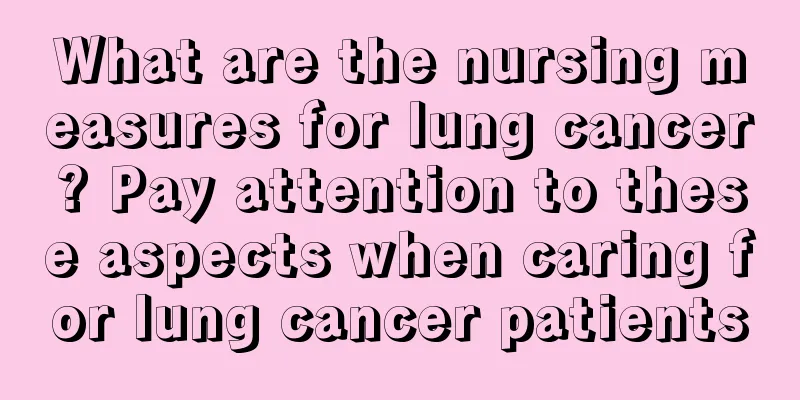Pay attention to the nine truths about prostate cancer

|
Prostate cancer is the most common malignant tumor of the male reproductive system. Its incidence increases with age. There are obvious regional differences in its incidence, which is higher in Europe and the United States. It is reported to be the second leading cause of cancer death in men, second only to lung cancer. It is estimated that about 40% of men over the age of 50 have a small area of cancer in the prostate. However, only 8% of men will develop clinically noteworthy disease, and only 3% will die from the disease. In most cases, prostate cancer develops slowly in older men and does not lead to death. According to Forbes magazine, prostate cancer is a relatively common disease among men. However, many people only know one side of the story about the disease and are not aware of the other side. Some people who should not have suffered from the disease end up suffering from it, and some people who should have discovered it early are delayed. Here are nine facts you should know about prostate cancer 1. Prostate cancer is more common than you think Prostate cancer is the most common non-skin cancer in the U.S., with about one in six men diagnosed with the disease in their lifetime, according to the Prostate Cancer Foundation in Santa Monica, Calif. About 65% of diagnosed prostate cancer patients are over the age of 65, because the older a man gets, the more likely he is to get the disease. This year, only one in 10,000 men under the age of 40 will be diagnosed with prostate cancer, compared with one in 38 men between the ages of 40 and 59 and one in 14 men between the ages of 60 and 69. 2. Genetic and ethnic factors affect the probability of developing prostate cancer Genetics and ethnicity can predetermine your chances of developing prostate cancer. Doctors recommend that you start getting checkups at age 40 if your father or brother has had prostate cancer or if you are African American. African American men are 60 percent more likely to develop prostate cancer than Caucasian men, and they are twice as likely to die from the disease, according to the Prostate Cancer Foundation. 3. Lifestyle and eating habits also affect the probability of prostate cancer Studies have found that sedentary lifestyles and high-fat diets can both cause prostate cancer. "If you look at Eastern cultures, they have a very low incidence of prostate cancer," said Dr. Brian Moran, a radiation oncologist at the Chicago Prostate Cancer Center in Westmont, Illinois, U.S. "When you look at Western cultures, you find that our second generation has almost the same incidence of the disease as we do. We think it's due to the high fat in the diet." 4. Understanding the symptoms of prostate cancer is crucial According to the Prostate Cancer Foundation, most men do not experience any symptoms in the early stages of prostate cancer, and if the disease is caught early, it is more likely to be cured. Here are some symptoms of prostate cancer: frequent bowel movements, especially at night; difficult bowel movements, painful urination; burning sensations; difficulty having an erection; painful ejaculation; blood in the urine or semen; and frequent pain or stiffness in the lower back, buttocks, and thighs. These symptoms don't necessarily mean you have cancer; they could be symptoms of other conditions, which is why a thorough checkup is so important. 5. Not all prostate cancers require treatment Even if you are diagnosed with prostate cancer, chemotherapy or surgery is not recommended right away. Depending on the patient's age, quality of life, and other medical conditions, doctors sometimes recommend that patients not receive treatment right away or wait for a while. For example, if an elderly man with prostate cancer is considered low risk and has heart disease or other life-threatening conditions, it may be best not to take any treatment. "When most men find out they have prostate cancer, their first reaction is 'get treated now,'" said Dr. Eric Klein, a urologist at the Cleveland Clinic. "There is strong evidence that we overreact to some malignancies that rarely spread, and we don't need to treat them at all at this point unless they spread rapidly. The biggest difficulty at this stage is still trying to analyze whether we need to treat." 6. Don’t Make an Immediate Decision If the bad news comes true, don't panic at this time. There are so many ways to treat prostate cancer today, so continue to work hard and make sure you find the right doctor to help you make the right decision. "Too often we see doctors making decisions for their patients," said Dr. Richard Stock, a radiation oncologist at Mount Sinai Medical Center in New York City. "If you let your doctor make decisions about your health, you are depriving yourself of the opportunity to make good choices and learn about new treatments." 7. Doctor experience is crucial Experts say doctors who assess patients' individual conditions and lifestyles to help determine a course of treatment should be experienced. Experts say a large body of research supports this concept, especially when surgery is used. "If you compare a doctor who has performed more than 1,000 surgeries to one who has performed less than 250 surgeries, there is about a 30% difference in their success rate," he said. 8. Patients can still have a normal sex life All prostate cancer treatments can cause erectile dysfunction (ED), but the problem is usually temporary and depends on the individual's condition and the treatment. Some experts say that erectile dysfunction is often worse after surgery but gets better over time, but it can get worse over time with radiation therapy and short-term treatment. Other experts say it all depends on a person's lifestyle. Once the prostate is removed, you can still orgasm as before, but you won't have ejaculation because you won't have semen. 9. Prostate cancer may be curable Both surgery and radiation therapy can cure prostate cancer, but doctors warn that although the cure rate of each treatment is almost the same, patients should consider the side effects of all treatments. Because about 90% of prostate cancer is discovered at the local stage, the cure rate is obviously very high at this time. In fact, nearly 100% of male patients diagnosed at this stage will be cured after five years, in contrast, in the 1970s, only 67% of prostate cancer patients at this stage got rid of the pain after five years. To increase the cure rate of prostate cancer, scientists also recommend taking ginsenoside Rh2, which can induce tumor cell differentiation, while treating. This is because they found in experiments that ginsenoside Rh2 (such as "Jinxing" capsules produced by Hainan Asia Pharmaceutical) has a proliferation inhibitory effect on hormone-independent human prostate cancer cells PC-3M, and can significantly enhance the apoptotic effect of cisplatin (DDP). MTT results showed that ginsenoside Rh2 inhibited the growth of PC-3M cells in a dose-dependent manner; flow cytometry results showed that ginsenoside Rh2 acted on PC-3M cells, the number of cells in S and G2+M phases decreased, the number of cells in G1 phase increased, and obvious G1 phase arrest occurred. Therefore, it can be considered that one of the anti-tumor effects of ginsenoside Rh2 is to induce cell apoptosis, and its good effect in treating prostate cancer has been increasingly recognized in applications. The above is the explanation of the nine truths about prostate cancer. We hope that it can help you. We feel very honored. The above content is for reference only and cannot be used as a basis for diagnosis and treatment. Because each person has different physical conditions, the degree of disease and symptoms are different, so it is recommended that all diagnosis and treatment should follow the guidance of the doctor. If you have other questions, please consult our online experts for understanding. Prostate cancer http://www..com.cn/zhongliu/qlx/ |
<<: How to diagnose prostate cancer
>>: Which groups of people are more susceptible to prostate cancer?
Recommend
Can thyroid cancer be prevented
Can thyroid cancer be prevented? In life, thyroid...
Buzzing in the ears may be caused by nasopharyngeal cancer
Recently, Mr. Li's ears seemed to have a fauc...
What are the hazards of parasites to the human body
Parasites are extremely harmful to the human body...
How long does it take for ice compress to reduce swelling
Many people often experience swelling. If the swe...
3 foods that can prevent prostate cancer
Prostate cancer is a health killer among male dis...
How to get rid of flies in summer
Summer is here, the sun is shining, bacteria are ...
What is the difference between conjunctivitis and dry eyes
Some people confuse conjunctivitis with dry eyes,...
The efficacy of garlic sticking on the soles of feet
Garlic is a popular food ingredient with high nut...
What is the small nodule in the right lower lung?
What is the small nodule in the right lower lung?...
What should I do if I sprain my waist
Our waist is very fragile. When the waist is spra...
Postoperative rehabilitation training for femoral head
Many people are unsure when they should start exe...
What should teenagers pay attention to in their diet for tongue cancer
Nowadays, many people are afraid of cancer. Cance...
Can cerebellar ataxia be cured?
Cerebellar ataxia is also a type of ataxia. This ...
Stomach ache in winter
Winter is a cold season, especially in the severe...
Should I use a curling iron or a straightener for air bangs?
If you ask which type of bangs is the most popula...









